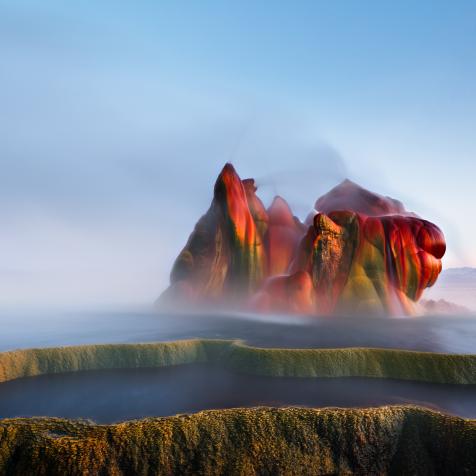
GettyImages/Lightguard
The Bermuda Triangle Isn't Actually a Mystery
The area of ocean between Florida, Puerto Rico, and Bermuda known as the Bermuda Triangle is the source of much mystery. Over the centuries, reports of ships and planes vanishing without a trace have haunted the public consciousness, leading the zone to be nicknamed "The Devil's Triangle." Suggested causes for these mysterious disappearances run the gamut from strange natural phenomena to underwater alien bases, but there's a more basic question to ask: Do more crafts really disappear in the Bermuda Triangle than in any similarly trafficked area? It turns out that the answer is no.
The Myth Doesn't Hold Up
In 1975, journalist Larry Kusche published the book "The Bermuda Triangle Mystery — Solved." In it, he reexamined as many Bermuda Triangle incidents from 1840 to 1973 as possible, including those in publications by other writers. One such writer was the man who might be considered the father of the legend, Charles Berlitz, who wrote The Bermuda Triangle in 1974. This was the first book to suggest that something strange was going on in the area. Kusche found that most of the writers' stories were just repeated from other publications without any fact-checking, and that Charles Berlitz may have been the worst offender: "If Berlitz were to report that a boat were red," Kusche wrote in a review of Berlitz's follow-up book, "the chance of it being some other color is almost a certainty."
So what did Kusche find? In some cases, there's no record of the ship in question ever existing. In others, the ships and planes were real but their "mysterious disappearances" were during bad storms — storms that the writer usually failed to mention. Still other incidents took place far away from the area. This isn't to say there are no disappearances in the Bermuda Triangle, but it's important to remember that the zone is a popular route for both ships and planes, so the odds are good that more crafts will sink or crash in that area than in a less trafficked one.

Craft Disappearance Theories
If the Bermuda Triangle really is the danger zone it's purported to be — and again, the evidence suggests it's not — there are plenty of rational reasons why aircraft and seaborne vessels would disappear over certain parts of the ocean. The most likely theories involve geography, not aliens or angry Atlantians. One explanation cites the fact that the ocean floor is relatively rich in methane, which can form a gas-ice-sediment mix under high pressure. If an underwater landslide occurs, this noxious mixture can burst out from the seafloor, entering the atmosphere and either intoxicating pilots or changing the density of the surrounding air and interfering with normal piloting.
These blasts have been known to damage offshore oil rigs, which means they could play a role in at least some of the more mysterious disappearances. It's not likely that scientists will be able to tell with much certainty until the ocean floor is mapped in greater detail. The latest map of the ocean floor took place in 2014. Despite the fact that it used advanced measurements of the Earth's gravity field, it still only has a resolution of 3 miles (5 kilometers) — much lower than what you would need to pinpoint the location of important geographical features or individual shipwrecks.
This article first appeared on Curiosity.com.


















